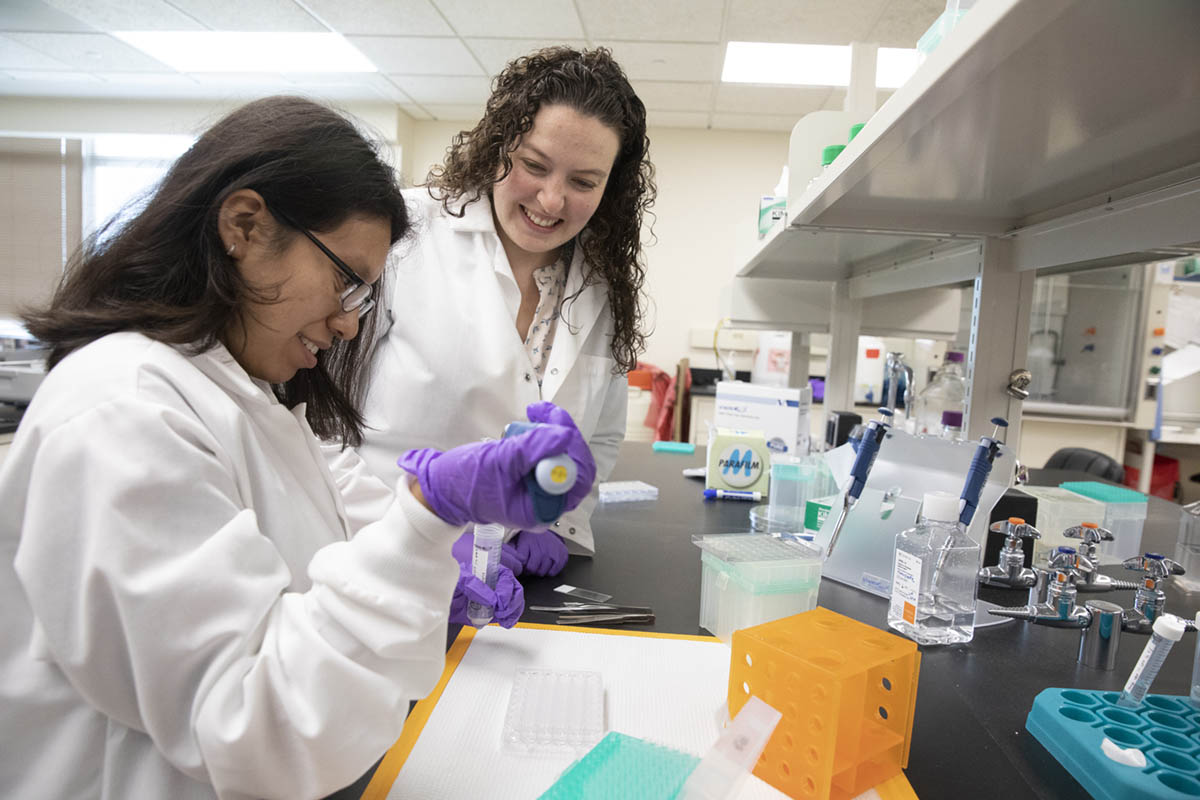Equipment endowment keeps Watson College’s tech up to date
To properly train students and conduct leading-edge research, having the right tools is key

Today’s technology is evolving at an ever-increasing speed, with the latest breakthroughs changing our everyday lives in ways both subtle and profound. Just think, for instance, how different your cell phone was five or 10 years ago.
To properly train its students and conduct leading-edge research, the Thomas J. Watson College of Engineering and Applied Science frequently must update its equipment or purchase newer devices.
A major source of funds to do this is through its equipment endowment, which includes funds earmarked by donors and invested for that specific reason.
In the 2018–19 academic year, the Watson College’s equipment endowment helped to purchase new research tools for its histology lab, where researchers study organic tissues on a microscopic level.
Tracy Hookway, an assistant professor in the Biomedical Engineering Department, pushed to add histology equipment when she arrived at Binghamton in early 2018. As part of her postdoctoral research, she has investigated how devices can integrate with the human body as well as regenerative medicine and tissue replacement — so she knows the importance of examining her work at a microscopic level.
“The only way for us to assess how the cells are responding to different paths of inquiry is to look at the inside of the tissue,” she says. “The equipment we purchased helps with that whole process.”
Now accessible to students and faculty are a tissue processor that removes water from excised or engineered tissue and “fixes” it to its preserve architecture; an embedding station that takes the
tissue and puts it into a block of wax so it can be better handled; and a microtome — which Hookway describes as “a fancy, tiny deli slicer” — that cuts very thin sections of tissue to put on microscope slides.
Researchers then can stain the slides or treat them another way to better show how cells respond to different biomaterials or chemicals.
“We were able to get some of the newest, greatest technology that’s out there,” Hookway says. “It updates with new bells and whistles, but not so much that it will make this outdated anytime soon.”
Since being installed in early 2019, the histology lab equipment has been utilized by undergraduate students on cardiac tissue to learn how the heart forms and how diseases manifest. Lab modules also have explored how cells and materials interact as well as how cells grow into functional tissues.
Future plans include integrating graduate-level courses on microscopy techniques, but Hookway notes that the possibilities are endless for how the equipment can be used.
“Students who are going into industry or any sort of clinical setting need to understand how to use this equipment on a routine basis,” Hookway says. “Even if they don’t use it directly, they should understand what its capabilities are so that they can engineer tissues and understand how our bodies work.”
Most importantly, Watson College students now can learn key skills that they take out into the world — and maybe change it for the better.
